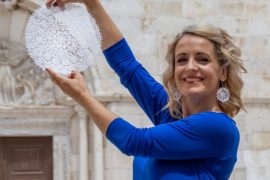This post is also available in: Croatian
In every corner of Dalmatia, under every little stone, there is a story that has yet to be discovered…
Split-Dalmatia County can be met and better acquainted with in different ways, and the Dalmatia Storytelling project takes you on a journey through ancient times, proof of the tumultuous history of this region.
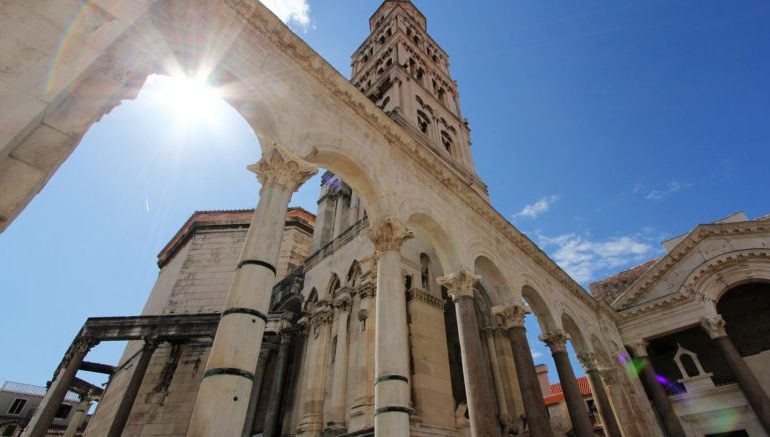
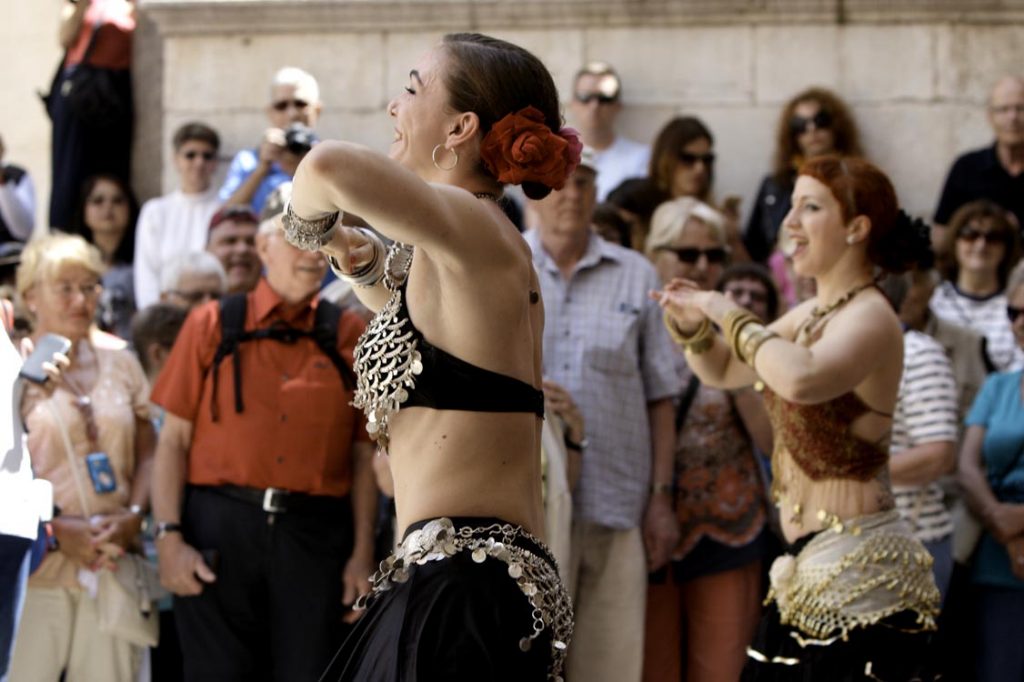
It was walked on by the feet of emperors, many soldiers of Roman legions, numerous pilgrims, and people who were looking for a better place to live, and that is why this area is a lure for tourists who like to travel from the present back in time, if just for a few moments.
The Dalmatia Storytelling destination project revives characters from Central Dalmatia’s rich past in museums and important heritage sites, and creates thematic interpretive walks. This is a unique project in Croatia and Europe, within which 23 thematic interpretation walks were created and 16 heritage characters were revived for the purpose.
Take in a breath of a time gone by…
Why go to Rome, when you can experience the history of the Romans here? Their mainstay was in Salona, an old Roman city which lies very close to Split. Salona isn’t merely referred to as an ancient gem, its historical material showcases and highlights all of the wisdom of the architecture of its time, as does the stunning Diocletian’s Palace and the Tilurij (Tilurium) Roman camp.
In this article, we’re going to bring you three interpretive tours performed by licensed guides in the roles of Prisca, Kusija Valerija and Don Frane Bulić, who will take interested tourists on a journey deep into the past.
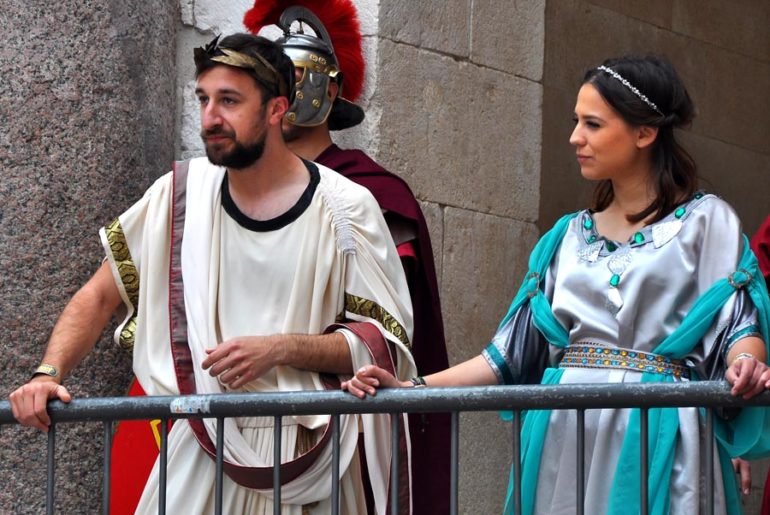
Interpretation tour: With the spirit of Prisca around the Palace
Much is known about the Emperor Diocletian, but much less is known about his life companion. Empress Prisca was a Roman who came from a patrician family. She lived with Diocletian in the palace of the same name, spending her life dedicated to him, conscientiously fulfilling all of the many obligations of a Roman wife, giving birth to his daughter, accompanying him to official dinners, and running the household within the palace.
The palace took a decade to construct and in 305 AD, it became inhabited and was constructed just eight kilometres from the then Roman metropolis of Salona. The palace was then deemed a true wonder, as it looked just like a Roman camp, while also doubling up as a luxury villa.
Accompanied by Empress Prisca, this tour takes you on a tour of the most important parts of the palace, the Silver and Iron Gates, the Peristyle, the Vestibule, the Cathedral – the former Emperor’s Mausoleum… Jupiter’s Temple. The most important part takes place on the Peristyle, the then ceremonial square, which connected the entrance to the Mausoleum, the entrance to Jupiter’s Temple, and to the south, the entrance to Diocletian’s own apartment. Diocletian and Prisca appear on the balcony, he is adorned in a purple cloak, encrusted with jewels and pearls, modelled on the Eastern emperors, the Persians. He raises his right hand and shouts “Ave”!
Close your eyes and imagine these walls covered with a gilded mosaic, imagine the sculptures in the niches and the vaults. What splendor it was! Can you imagine that atmosphere? The morning sun rising from this Eastern opening and illuminating the opposite wall (which boasted a gilded mosaic), so that light is reflected all over the room?
Interpreter: Alemka Krivić

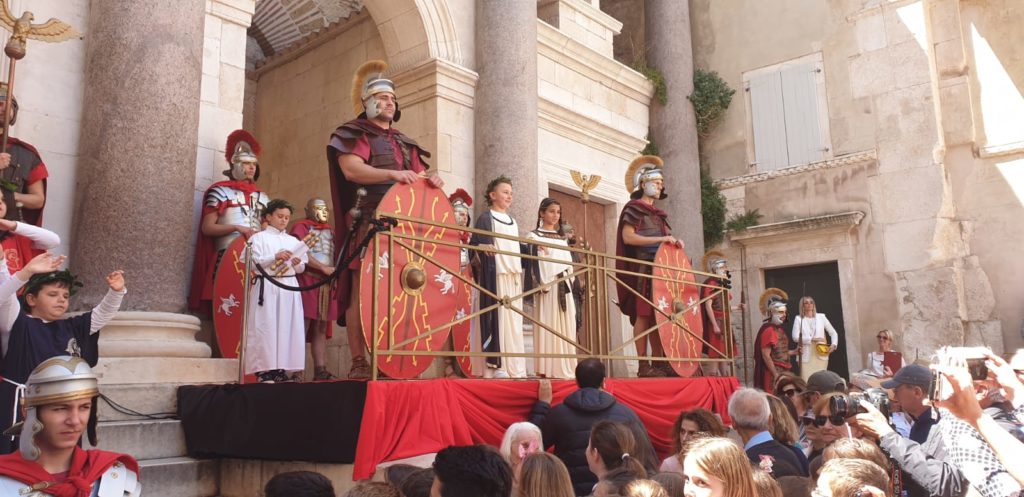
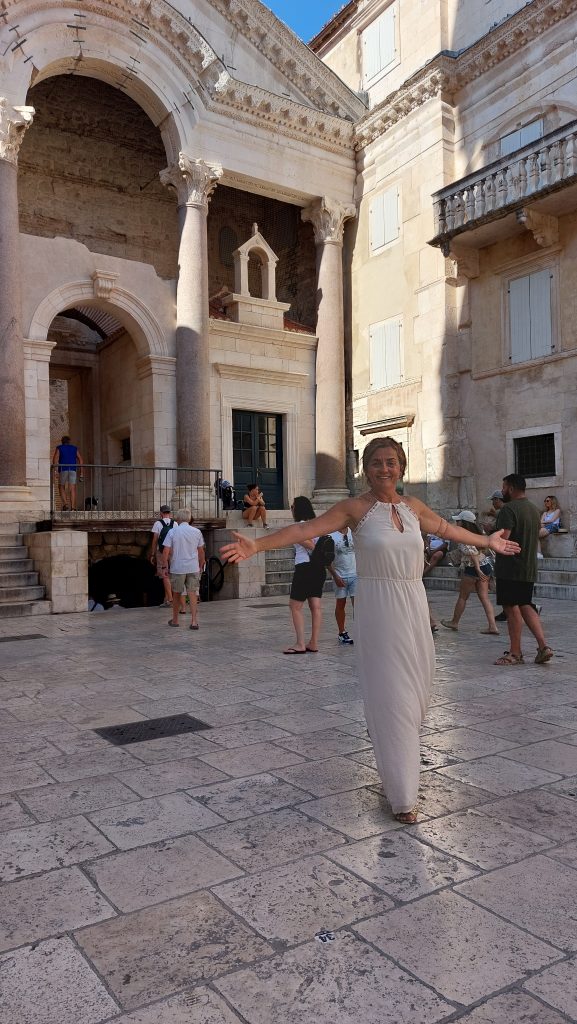

Interpretation Tour: The Story of Tilurium (Tilurij)
The Tilurium Roman legionary camp is located on the northeastern part of the plateau above Trilj, on the right bank of the river Cetina, and it was one of the most important military centres of the entire Roman province of Dalmatia – Camp VII of the Roman legions.
It covers an area of about 12 hectares, and today the ancient settlement is covered by the central part of the village of Gardun, which towers over Trilj. The camp is located in a strategically very important position, since the altitude dominates the surroundings and thus enables the control of communications across the river Cetina.
It has been systematically researched archaeologically since back in 1997. The excavations resulted in imposing remains of architecture and numerous movable discoveries, and two Roman tombstones were found in the neighbouring village of Vojnić. One belonged to Lucius Cusius Anharen, a freedman who died at just 20 years old, and on whose character the interpretive walk of the Museum of the Trilj Region in Trilj is based.
The project is performed by licensed guide Sanja Budić Leto who takes the role of Roman Kusija Valerija, who will lead interested tourists through the story of the camp and what each day looked like in this sort of life from a woman’s perspective.
This storytelling tour will present the way life was lived back in those ancient times in an innovative and interesting way, as well as reveal the history. It will certainly be an unforgettable experience and a valuable source of new knowledge, both for tourists and for our fellow citizens.
Interpreter: Sanja Budić Leto
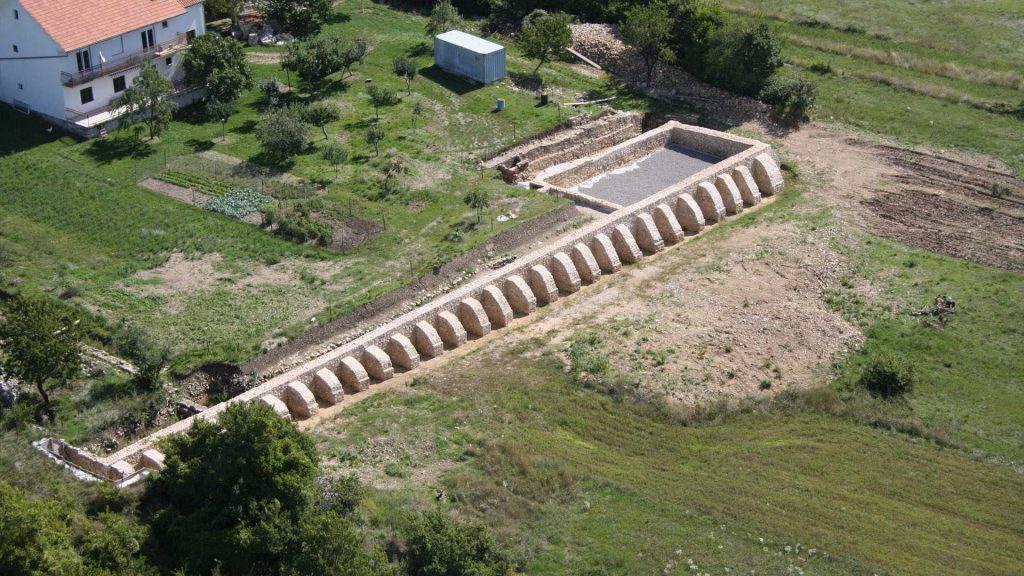
3. Interpretation tour: Don Frane Bulić
The costumed interpretive walk begins at the entrance to the Museum where don Frane Bulić, i.e. the performer, talks about the history of the Museum, with a well-known anecdote about the acquisition of money for the construction of the building. Don Frane was in an audience with the Emperor and told him about the problems of the obsolete building of the Museum.
The Emperor then wrote a receipt for the allocation of the necessary funds. But what matters is what stamp the Emperor placed on that document. If he put a small stamp, the Minister would certainly give some amount, but if he put a large one, then the Minister must give the full amount. When the Emperor wrote out that confirmation, he reached for the small seal, but Don Frane anticipated that he’d do so, and himself added a large seal.
The lapidary and stone monuments are also visited on this tour. Don Frane managed to purchase the sarcophagus of Valeri Dinent and his wife for the Museum, the only sarcophagus in Salona (today’s Solin) to have avoided being stolen. Don Frane also mentions another sarcophagus – the Sarcophagus of the Good Shepherd. When the building was being constructed, he first had a sarcophagus erected, and only then did he erect a tower so that the sarcophagus couldn’t be taken away.
Interpreter: Nino Švonja


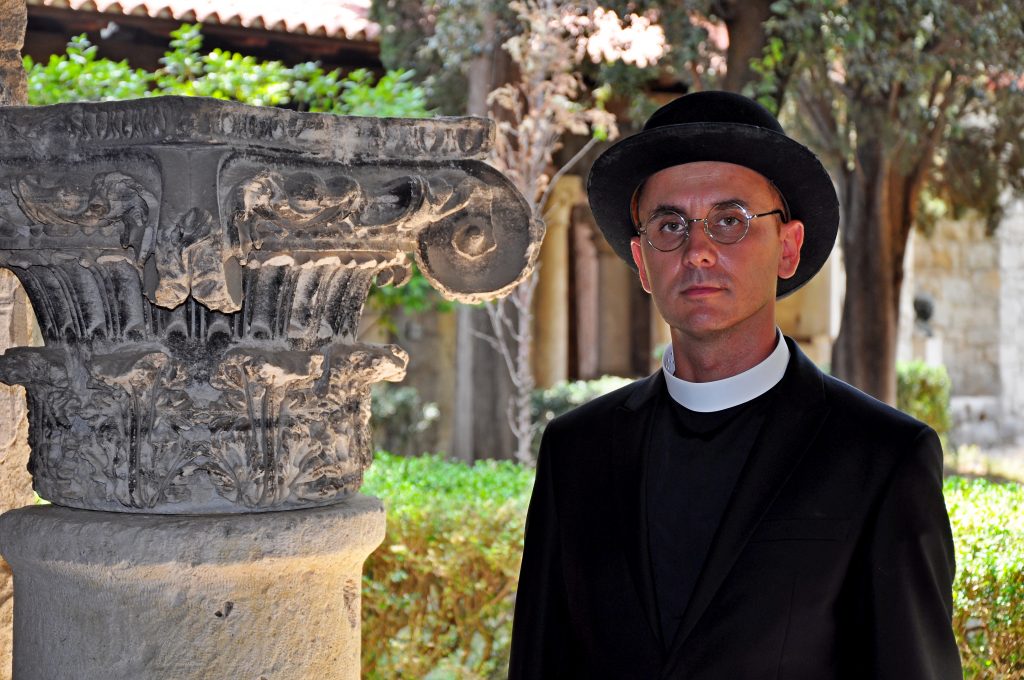
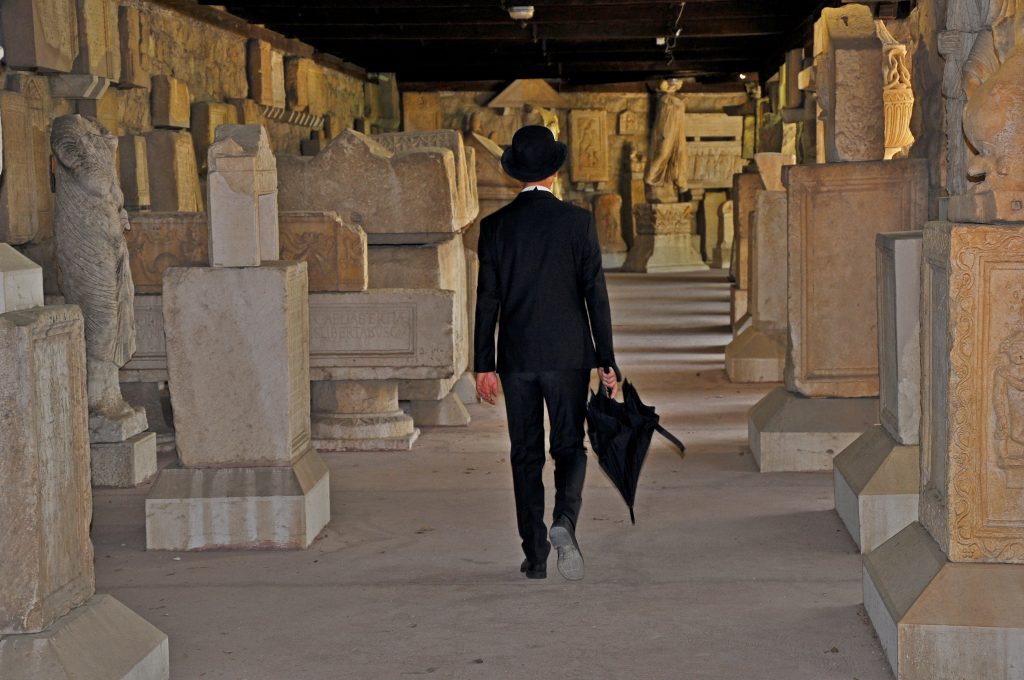
This post is also available in: Croatian



